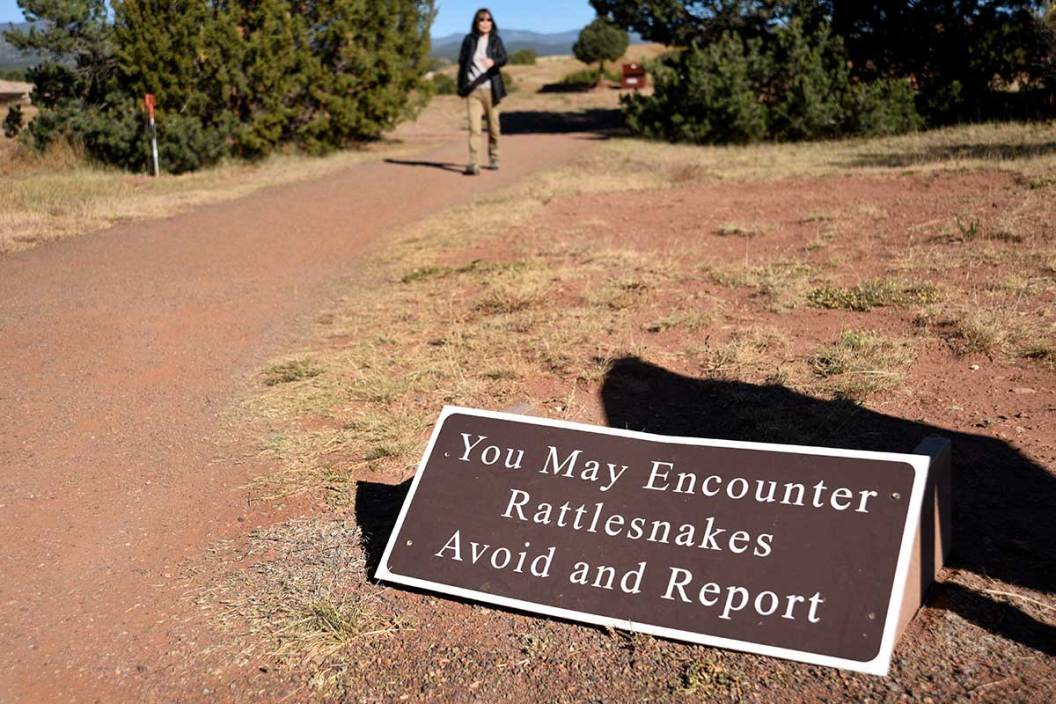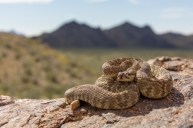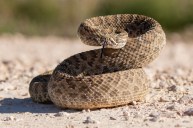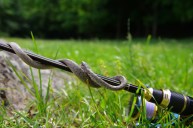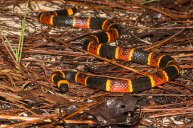Rattlesnake safety is of utmost importance in regions where they exist. Here's how to avoid a negative experience.
Whether it's weather patterns, human encroachment, habitat loss, or something else, it seems like rattlesnake encounters are more common than ever.
When winter starts to wind down and we shift into the spring season, we're reminded it's a good time to brush up on rattlesnake safety and avoidance.
Before you think that this information might not effect you, let's also take a moment to remember where they live.
Nearly Every U.S. State Has Rattlesnake Populations
The only states without any reported sightings of rattlesnakes are Rhode Island, Maine, Delaware, Hawaii, and Alaska.
The remaining states have had sightings or established populations for years. They aren't found everywhere, and some types of habitat are better suited for snakes than others. But ultimately, your odds of being close to a rattlesnake are probably higher than you think.
As outdoorsmen and women, we're inherently going to be more inclined to encounter a rattlesnake than someone who hates the wilderness and never goes camping, hiking, or fishing. There are ways to identify when a rattlesnake is more likely to be in an area, and some precautions you can take when you're subjecting yourself to the possibilities of a rattler encounter.
Rattlesnake Risk Assessment
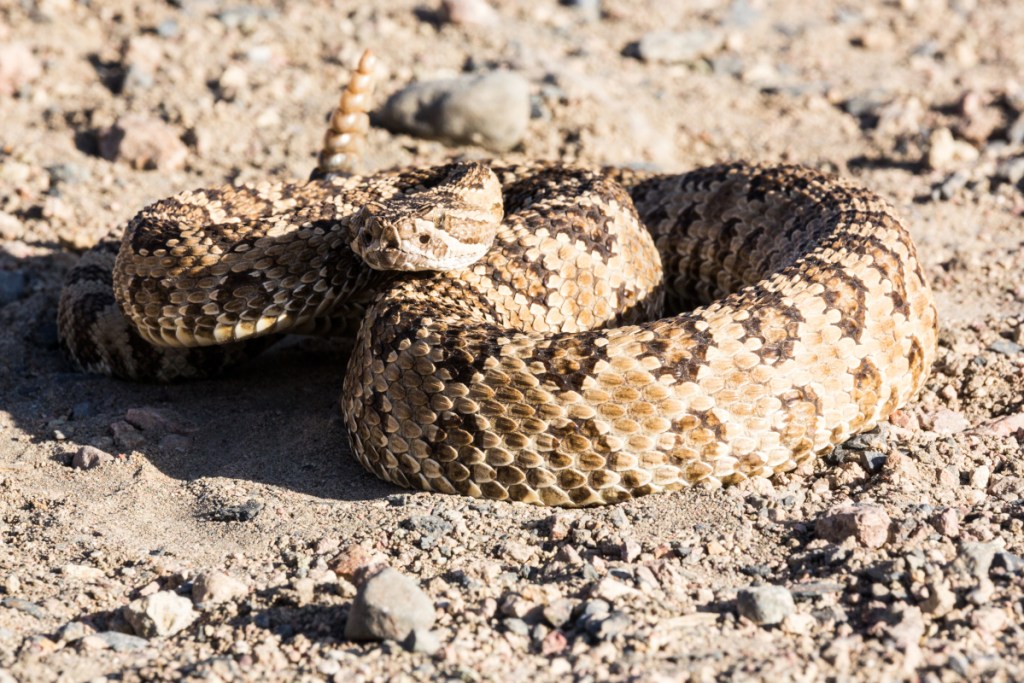
All rattlesnakes are venomous and potentially lethal. Some, like the western diamondback, are extremely dangerous to humans. Any bite can result in the injection of its dangerous venom. In fact, even a dead rattlesnake can release and inject venom if its jaws are opened.
There are things we can do to lessen our chances of encountering, or being bit by, a rattlesnake. Always avoid obvious snake gathering areas such as tall grass, rocky outcroppings, and wood piles. Don't put your hands or feet in places you can't see, or haven't inspected first. Stick to marked and established trails when possible, and check your tent, sleeping bag, and other belongings for signs of snakes.
You can listen for the warning rattle, but remember that rattlesnakes don't always rattle before striking.
It's smart to wear over-the-ankle hiking boots, or better yet, snake boots or otherwise bite-proof footwear. Definitely avoid bare feet or sandals if you'll be in areas known to house snakes. Wear long pants when you can, and in the rare occasions you've got to reach or crawl into underbrush, take extreme caution.
Rattlesnake Safety Tips
The USDA has some good overall tips on keeping safe in rattlesnake country. These tips may or may not be suitable for every state or region that has rattlesnake populations, since some areas have more of the reptiles than others. Even in areas that have few snakes, smaller snakes, and less distribution, these tips can still be of use to anyone walking, hiking, or camping in potential rattlesnake territory.
Most unfortunate interactions with rattlers occur from April to October, mainly in the summer months when they're most active. Rattlesnakes may roam at any time of the day or night.
If you hear or see a rattlesnake, move away from it slowly and avoid sudden or threatening movements towards the reptile. Instincts might prompt someone to swing a stick or throw a rock when experiencing a rattlesnake encounter, but it's important not to do that.
What to Do If You're Bitten By a Rattlesnake
About one quarter of all rattlesnake bites are "dry" meaning no venom was injected into the victim, but the bites should always get medical treatment. Remember, do not attempt to handle a dead or freshly killed snake as it can still inject its venom. Here is what the experts say to do if you or someone you're with is bit by a rattlesnake.
First and foremost, call 911, contact a ranger station, or start moving to the nearest first aid station to seek help and further medical advice. Try to remember the snake's color, size, and characteristics, the exact events, and the location and time of the encounter that led to the bite.
Always remove watches, rings, and other jewelry from your fingers, hands, arms, feet, or legs. Seek to immobilize the affected area, and keep the bite below the heart whenever possible. If you can, wash the bite area (with soap and water if available) to keep it clean.
Seek safe transport to the nearest medical facility immediately.
The USDA provides a helpful list of things NOT to do as well:
- Do not make incisions at the bite wound.
- Do not attempt to restrict blood flow by applying a tourniquet or other bandage.
- Do not ice the wound.
- Do not attempt to draw out (suck) the venom with your mouth.
Modern, regularly-available snakebite kits come with a suction device that can be helpful when used correctly, and can be attempted if the time to arrive at a medical facility is more than 30 minutes.
Further Thoughts
Snake country, as it is officially defined, is any area where they exist commonly and reside near human populations. Sometimes, rattlesnakes are just a part of everyday life. Snakebite kits are not unheard of and in fact popular in regions where the rattlesnake populations are large and steady.
It's critical to always respect snakes and give them a wide berth if you see one. Hikers and people enjoying the outdoors should always have a cell phone or a satellite communication device handy for emergency calls if they'll be in any known venomous snake areas.
A little bit of knowledge and the right sort of reaction can help a human turn a rattlesnake encounter into a good story, and nothing more.
Looking for a new way to display those antler sheds? Go to Rack Hub and use the coupon code Craiger. Be sure to follow my webpage, or on Facebook and YouTube.
NEXT: MORE THAN 30 RATTLESNAKES FOUND HIDING UNDER TEXAN'S HUNTING CABIN
